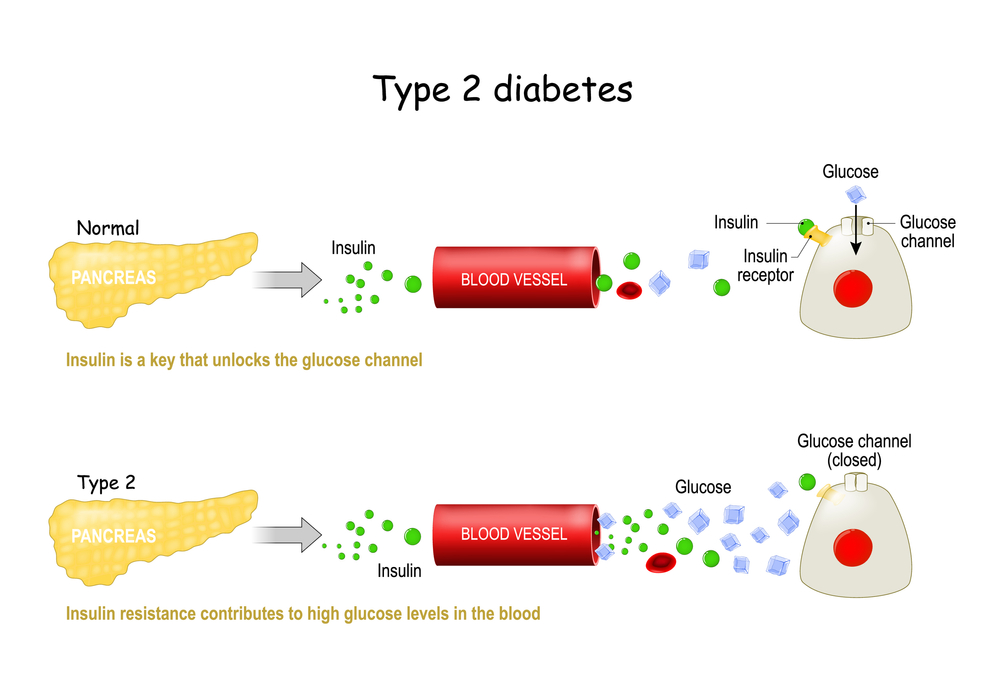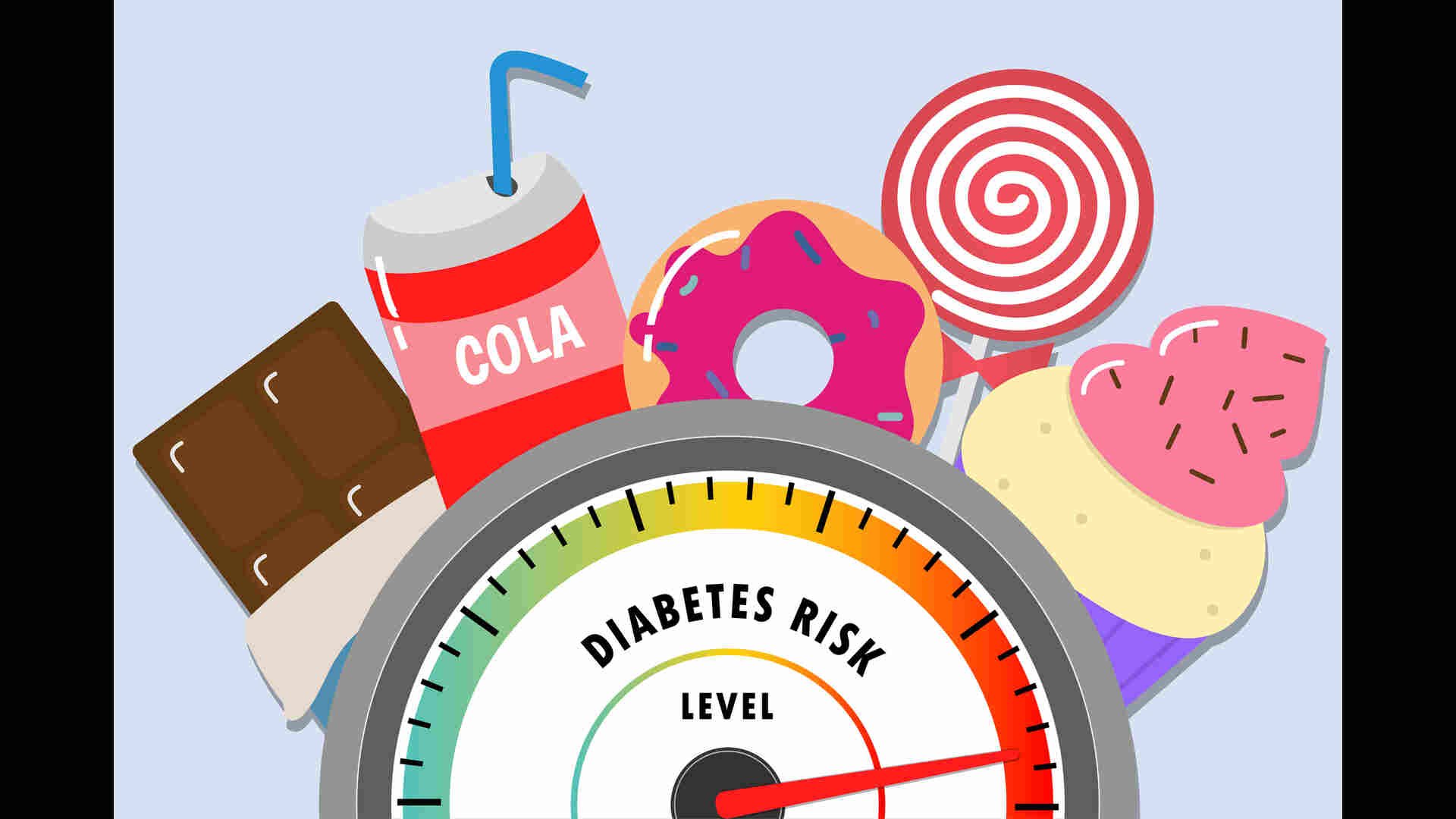Diabetes is a chronic condition where the body struggles to regulate blood sugar levels due to inadequate insulin production or insulin resistance. Its is a chronic medical condition that occurs when the body is unable to properly process glucose, a type of sugar found in the blood. This leads to high levels of glucose in the bloodstream, which can cause serious health issues affecting the heart, kidneys, nerves, and eye over the time . There are two main types of diabetes:
Type 1: Type 1 diabetes, known as insulin-dependent diabetes, is a chronic condition where the pancreas produces little to no insulin
Type 2 : Type 2 diabetes is a chronic condition that affects the way the body regulates and uses glucose (sugar) as fuel.

Type 1 Diabeties
Type 1 Diabeties
Type 1 diabetes, known as insulin-dependent diabetes, is a chronic condition where the pancreas produces little to no insulin. Insulin is a hormone that allows glucose (a type of sugar present in the body ) to enter cells to produce energy.
Causes
The exact cause of Type 1 diabetes is unknown. It is believed to involve a combination of genetic and environmental factors, such as exposure to certain viruses and genetic formulation. In this condition the body’s immune system mistakenly attacks and destroys the insulin-producing cells in the pancreas.
Symptoms
Symptoms of Type 1 diabetes include:
– Increased thirst
– Frequent urination
– Bed-wetting in children who previously didn’t wet the bed at night
– Extreme hunger
– weight loss
– Irritability or mood changes
– Fatigue and weakness
– Blurred vision
Consult a healthcare provider if you or your child experience any of these symptoms.
Risk factors
Risk Factor for Type 1 diabetes include:
Complications
Type 1 diabetes can lead to serious complications affecting major organs, including the heart, blood vessels, nerves, eyes, and kidneys. Managing blood sugar levels can reduce the risk of complications such as:
– Heart and Blood Vessel Disease: Increased risk of coronary artery disease, heart attack, stroke, atherosclerosis, and high blood pressure.
– Nerve Damage : Excess sugar can damage blood vessels feeding the nerves, causing tingling, numbness, pain, and digestive issues.
– Kidney Damage : Can lead to kidney failure or end-stage kidney disease requiring dialysis or a transplant.
– Eye Damage : Risk of diabetic retinopathy and cataracts , potentially leading to blindness.
– Foot Damage : Poor circulation and nerve damage increase the risk of infections and foot damage
– Skin and Mouth Conditions: Higher susceptibility to infections, gum disease, and dry mouth.
– Pregnancy Complications : Increased risk of miscarriage, stillbirth, birth defects, diabetic ketoacidosis.
Type 2 Diabeties
Type 2 diabetes is a chronic condition that affects the way the body regulates and uses glucose (sugar) as fuel. This results in high levels of sugar production and circulation in the blood, which can eventually lead to complications in the circulatory, nervous, and immune systems.

Type2 Diabeties
Causes
Type 2 diabetes is primarily caused by two issues:
1. The pancreas doesn’t produce enough insulin, a hormone that regulates the movement of sugar into cells.
2. Cells respond poorly to insulin and take in less sugar.
Symptoms
Symptoms of type 2 diabetes often develop slowly. Most patients dont realise about presence of its symptoms over a prolonger period of time. When symptoms appear, they may include:
– Increased thirst
– Frequent urination
– Increased hunger
– Unintended weight loss
– Fatigue
– Blurred vision
– Slow-healing sores
– Frequent infections
– Numbness or tingling in the hands or feet
– Areas of darkened skin, usually in the armpits and neck
Consult a healthcare provider if you notice any symptoms of type 2 diabetes.
Risk Factors
Risk factors for type 2 diabetes include:
– Weight: Being overweight or obese
– Fat Distribution : Storing fat mainly in the abdomen
– Inactivity : Lack of physical activity
– Family History: Having a parent or sibling with type 2 diabetes
– Race and Ethnicity: Higher risk in Black, Hispanic, Native American, Asian, and Pacific Islander populations
– Blood Lipid Levels: Low HDL cholesterol and high triglycerides
– Age: Increased risk after age 35
– Prediabetes : Elevated blood sugar levels that are not yet diabetes
– Pregnancy-Related Risks: History of gestational diabetes or giving birth to a baby over 9 pounds
– Polycystic Ovary Syndrome (PCOS): Condition characterized by irregular periods, excess hair growth, and obesity
Complications
Type 2 diabetes can lead to complications affecting major organs, including:
– Heart and Blood Vessel Disease: Increased risk of heart disease, stroke, and atherosclerosis
– Nerve Damage : Damage to nerves, causing tingling, numbness, and pain
– Other Nerve Damage : Affecting the heart, digestive system, and causing erectile dysfunction
– Kidney Disease: Chronic kidney disease or severe damage requiring dialysis or a transplant
– Eye Damage: Increased risk of cataracts, glaucoma, and diabetic retinopathy
– Skin Conditions: Higher risk of bacterial and fungal infections
– Slow Healing: Increased risk of infections and amputations
– Hearing Impairment : More common in people with diabetes
-Sleep Apnea : Common in people with type 2 diabetes, often related to obesity
– Dementia: Increased risk of Alzheimer’s disease and other dementias.























